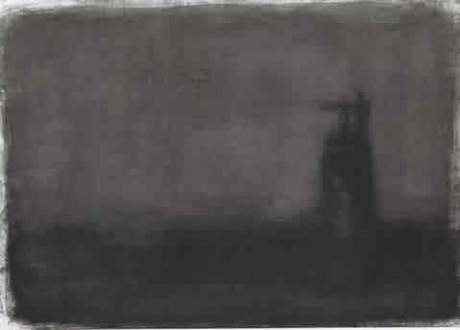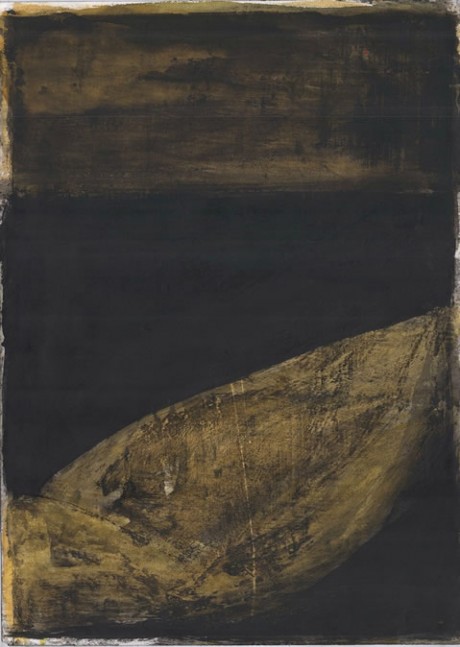Chen Shapira "Tiaras"
By Yair Shulevitz (October 27, 2011)
Shapira's painting is made of layers on layers of color and saturated with intense materiality. The process of painting seems to be a cyclical action that seemingly requires the paper to be loaded repeatedly by adding, subtracting, and erasing it until it is torn. All these create "history" by the very act of work.
The paintings deal with the cultural and existential reality of this place, which is expressed in symbols or symbolic visual images such as kites, planes, a wall and a tower. The images represent a society besieged by the military discourse still penetrating deep into it.
The image of the Tiara may be misleading: on the one hand, it is an image of an airplane, with all the forceful meanings that accompany it. On the other hand, it is a memory of childhood games, an echo of innocence and naivety.
Like Rothko's paintings, Shapira's works can also be felt in a spiritual atmosphere that arises from them and invites the viewer to a deep inner look. If one can speak of an ethical painting, it seems that Shapira's painting belongs to this category: from his deep commitment to painting, through his consistent work to the conceptual aspects that emerge from his work.
* The translation brings the spirit of things


